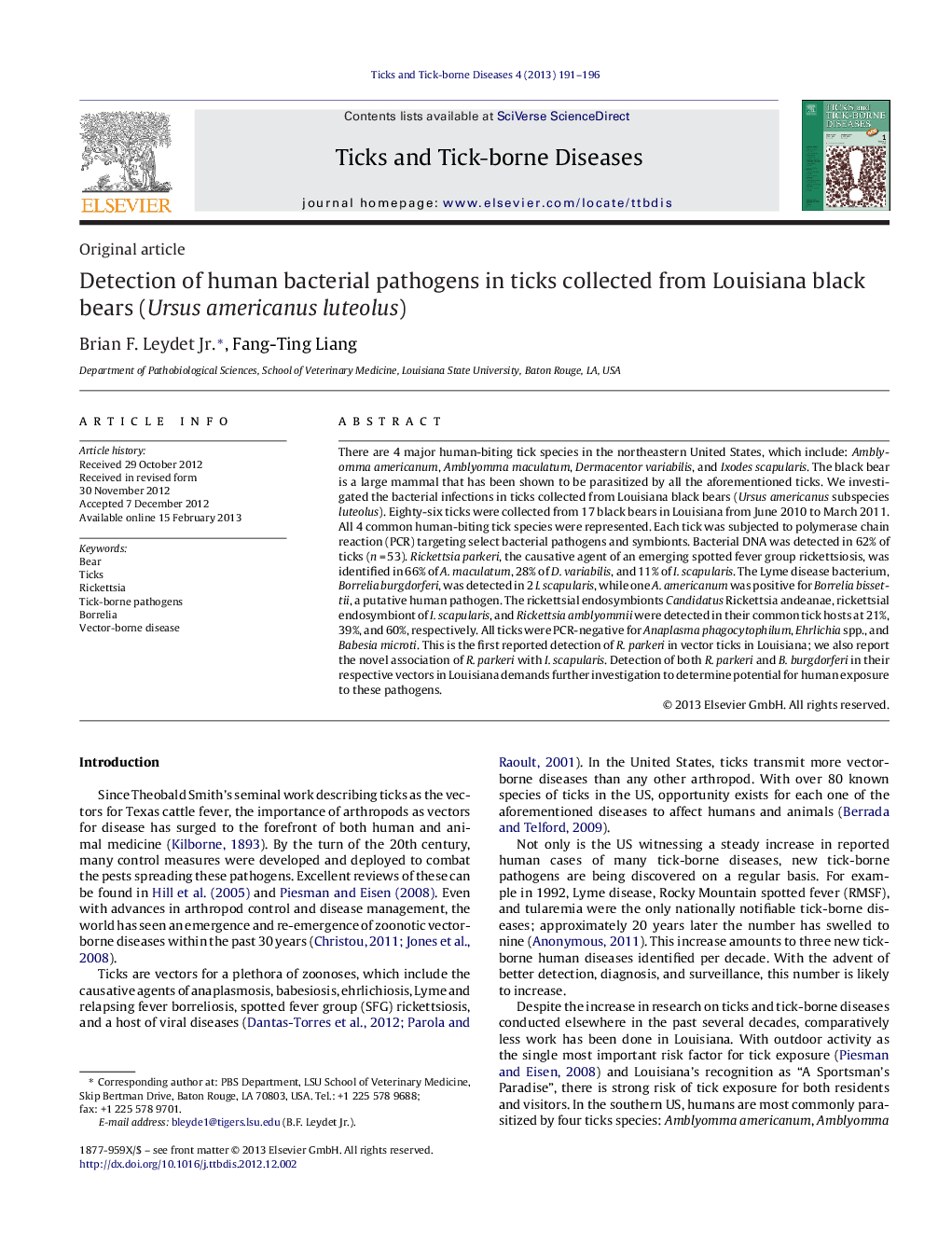| Article ID | Journal | Published Year | Pages | File Type |
|---|---|---|---|---|
| 2474165 | Ticks and Tick-borne Diseases | 2013 | 6 Pages |
There are 4 major human-biting tick species in the northeastern United States, which include: Amblyomma americanum, Amblyomma maculatum, Dermacentor variabilis, and Ixodes scapularis. The black bear is a large mammal that has been shown to be parasitized by all the aforementioned ticks. We investigated the bacterial infections in ticks collected from Louisiana black bears (Ursus americanus subspecies luteolus). Eighty-six ticks were collected from 17 black bears in Louisiana from June 2010 to March 2011. All 4 common human-biting tick species were represented. Each tick was subjected to polymerase chain reaction (PCR) targeting select bacterial pathogens and symbionts. Bacterial DNA was detected in 62% of ticks (n = 53). Rickettsia parkeri, the causative agent of an emerging spotted fever group rickettsiosis, was identified in 66% of A. maculatum, 28% of D. variabilis, and 11% of I. scapularis. The Lyme disease bacterium, Borrelia burgdorferi, was detected in 2 I. scapularis, while one A. americanum was positive for Borrelia bissettii, a putative human pathogen. The rickettsial endosymbionts Candidatus Rickettsia andeanae, rickettsial endosymbiont of I. scapularis, and Rickettsia amblyommii were detected in their common tick hosts at 21%, 39%, and 60%, respectively. All ticks were PCR-negative for Anaplasma phagocytophilum, Ehrlichia spp., and Babesia microti. This is the first reported detection of R. parkeri in vector ticks in Louisiana; we also report the novel association of R. parkeri with I. scapularis. Detection of both R. parkeri and B. burgdorferi in their respective vectors in Louisiana demands further investigation to determine potential for human exposure to these pathogens.
